





| Lackey Moth (Malacosoma neustria (Linnaeus, 1758)) |






|
|
Scientific name: Malacosoma neustria (Linnaeus, 1758) Common name: Lackey Moth French name: Bombyx à livrée, Livrée des arbres , Bombyx à livrée, Bombyx neustrien, Bombyx à bagues. Order: Lepidoptera Suborder: Heterocera Family: Lasiocampidae Subfamily: Malacosominae Wingspan: 25-35 mm. Males are generally smaller than females. Biotope: Deciduous forests, open woodlands, bocage, hedgerows bordering roads, parks, orchards. Geographic area: Palaearctic region. Flight time: June to September. Number of generations : 1 Caterpillar: The caterpillar is brightly coloured. It is a nice blue colour with thin black, yellow, orange longitudinal lines and a thin white dorsal line. The head is blue with two black oval-shaped patches resembling eyes. The caterpillars gather on silk tents located in vegetation and used to regulate temperature for a better assimilation of food. Host plant: Many deciduous trees and especially Blackthorns (Prunus spinosa), but also Willows (Salix), Common Hawthorns (Crataegus monogyna), Apple Trees (Malus), Oaks (Quercus), Birches (Betula), Poplars (Populus), Lime trees (Tilia), etc. |
The Lackey Moth is very variable in size and in colour, often pale beige, ochrous or reddish brown. The fore wings are crossed by a wide band, either paler of darker and bordered by two thin lines of the opposite colour. Males have feathery antennae. Females lay the eggs in masses which encircle thin branches like rings. The eggs over winter. |
| [To know more about the Lackey Moth] [Next picture] [Top] |
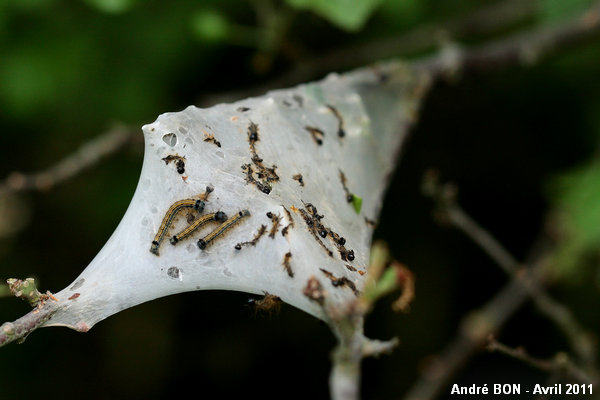
|
Here is a silk tent where caterpillars gather after eating and for moulting. You can see the remains of the previous moults. |
| [To know more about the Lackey Moth] [Next picture] [Previous picture] [Top] |
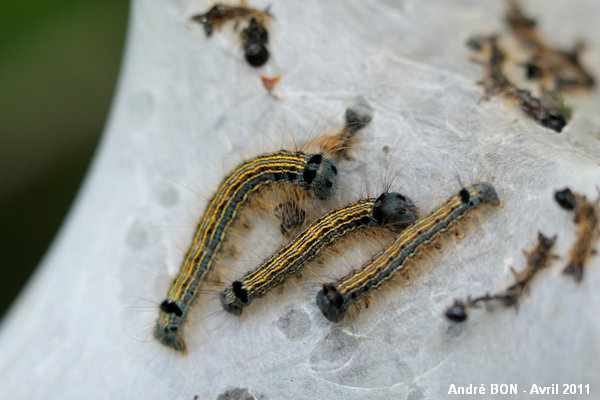
|
The silk tents is generally oriented to catch the sunlight in the morning to speed up the temperature rise of the caterpillars. |
| [To know more about the Lackey Moth] [Next picture] [Previous picture] [Top] |
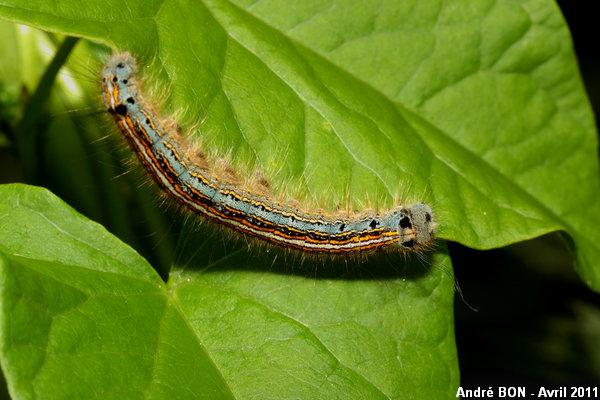
|
The bright colour of these caterpillars contrast with the dull colours of the moths. |
| [To know more about the Lackey Moth] [Next picture] [Previous picture] [Top] |
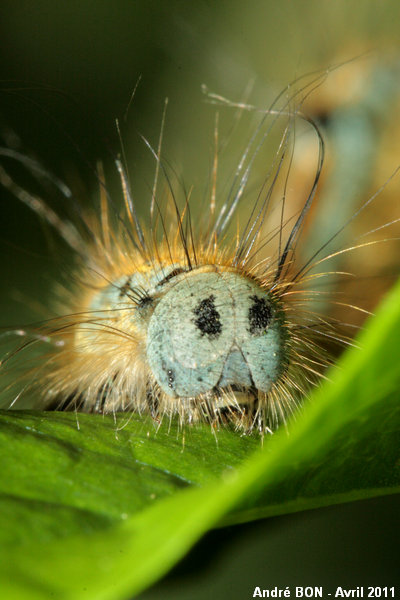
|
It is difficult not to think to eyes though these are only colour patches. |
| [To know more about the Lackey Moth] [Next picture] [Previous picture] [Top] |

|
This caterpillar is really photogenic. You can shoot very interesting pictures with a very short depth of field. |
| [To know more about the Lackey Moth] [Previous picture] [Top] |
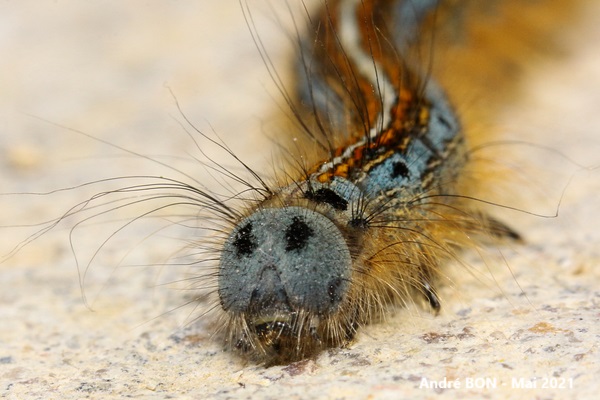
|
Every year in May, I come across these caterpillars that come to climb the walls of the old farm. Is it to find a place to pupate? I then took the opportunity to shoot a few pictures. I also hope, one day, to cross paths with the imago. |